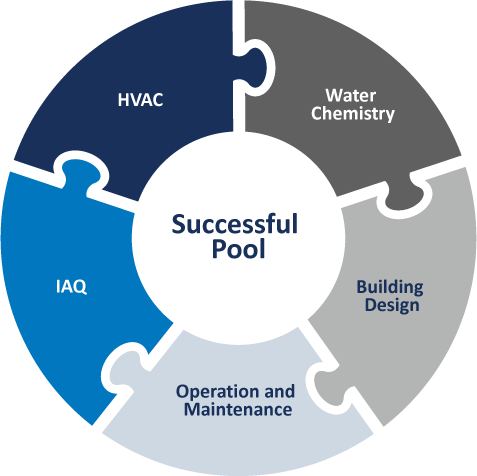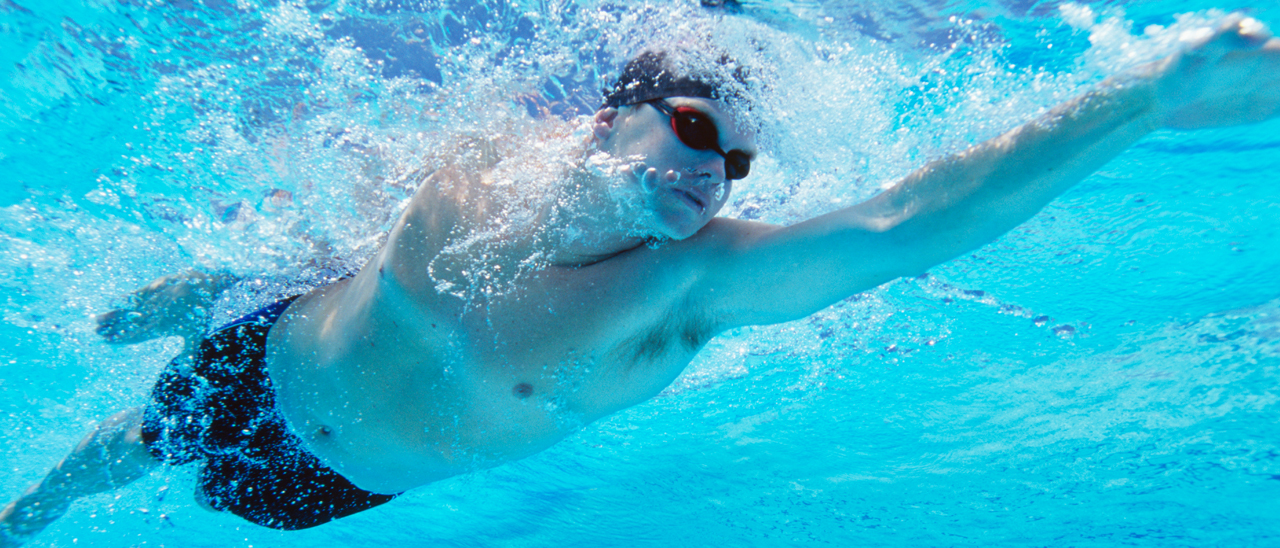Everything Engineers, Contractors, and Owners Need to Know to Create the Optimal Indoor Pool Environment.
Everything Engineers, Contractors, and Owners Need to Know to Create the Optimal Indoor Pool Environment.
CHAPTER ONE
 The know-how and experience to provide a first-class indoor pool experience exists today. There are hundreds of successful indoor pools currently operating in North America.
The know-how and experience to provide a first-class indoor pool experience exists today. There are hundreds of successful indoor pools currently operating in North America.
Resources are available to help guide and educate indoor pool designers, operators, and owners. In 2019, ASHRAE created a new chapter in the design handbooks dedicated to indoor pool design. The CDC’s Council for the Model Aquatic Health Code (CMAHC) is also actively working to provide better guidelines on indoor pool design and Indoor Air Quality (IAQ).
A first-class indoor pool experience should be everyone’s expectation. Fortunately, it is absolutely possible to provide a safe, healthy, comfortable indoor pool environment, all while keeping operating costs at a minimum.
There is no “one thing” that will ensure a successful pool. Many things need to come together during the design and then during operations.
This puzzle helps illustrate the key factors needed for success. It is a coordinated effort. A proper design sets the stage for continued success for operation and maintenance.
The building itself also needs to be designed suitable for a higher temperature and dew point application. An indoor pool environment is different from traditional conditioned spaces and needs to be designed appropriately. The building, HVAC system, and all equipment must perform reliably, day in and day out, ideally with minimum energy consumption, no matter the ambient temperatures or level of pool activity.
This guide is the culmination of decades of experience from a multitude of contributors and partners. We have seen first-hand what works and what doesn’t. This guide offers best practice advice based on what we have seen work successfully. While there are many details that need to be addressed, a great indoor pool environment should be something everyone expects, without compromise. While bad IAQ ultimately stems from water chemistry issues, there are things that need to be done on the HVAC side to provide the best possible comfort and air quality. That’s why we created this Natatorium Design Guide.
THE BASICS
The natatorium experience for a patron should be no different than in any other room in a building. It should be comfortable, healthy, and have good air quality. When designing a natatorium, the first recommended step for the designers is to meet with the facility owners to discuss the desired operating conditions and expectations. Only once the operating conditions and expectations are defined can the designer effectively calculate loads and address all the key design aspects.
A natatorium is one of the most notoriously difficult facilities to design because there are so many critical considerations that, if overlooked, can develop into serious problems affecting the building structure or result in an unpleasant experience or ill-health effects for the occupants. There are vital design aspects that must be considered in order to deliver a successful facility. These include relative humidity levels, condensation, air temperature, pool water temperature, pool activity levels, air distribution, outdoor air, exhaust air, pool water treatment, and chloramine control. This guide will cover all the key considerations for a successful facility. However, the two most critical design aspects that will be covered are chloramine control and air distribution.
There are new technologies available that will reduce and possibly eliminate chloramines. To ensure good air quality within a facility, an investment in one of these technologies is a must. UV water treatment and the Evacuator source capture system are two highly effective technologies for chloramine control. The treated and conditioned air must be delivered down into the breathing zone where the patrons are located if there is to be any reasonable expectation of providing good air quality and a comfortable experience.

